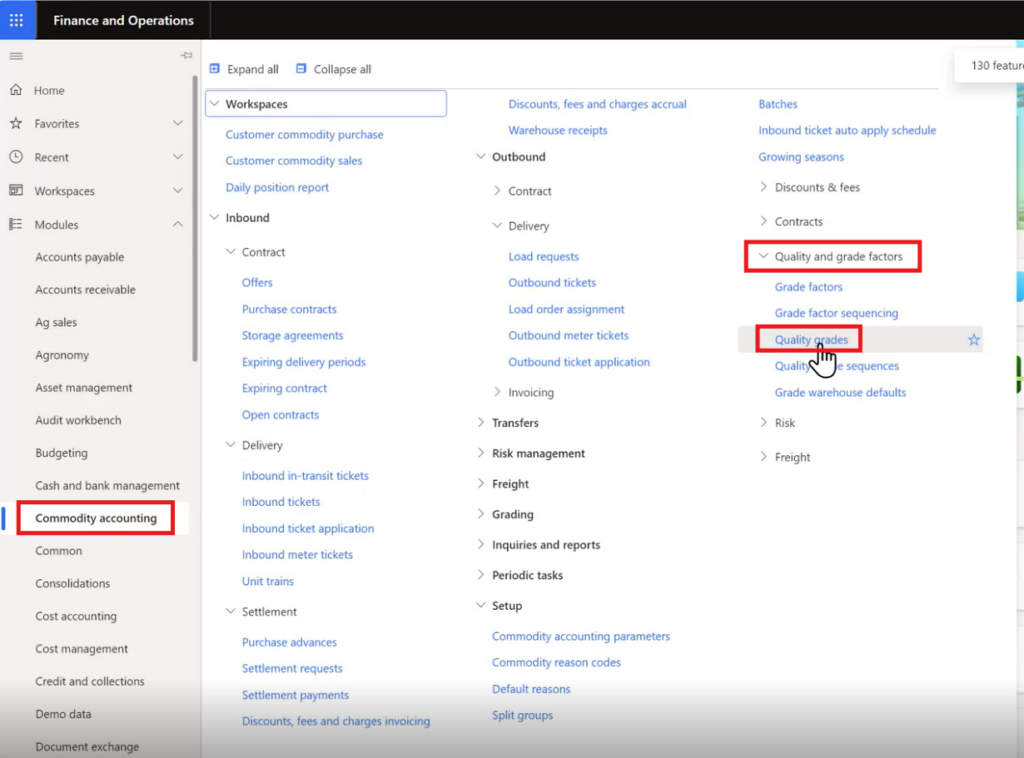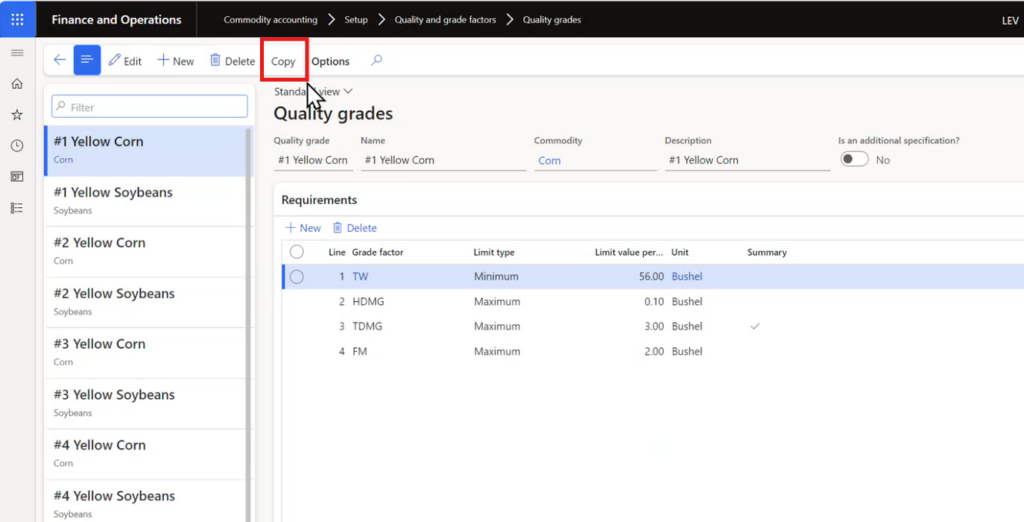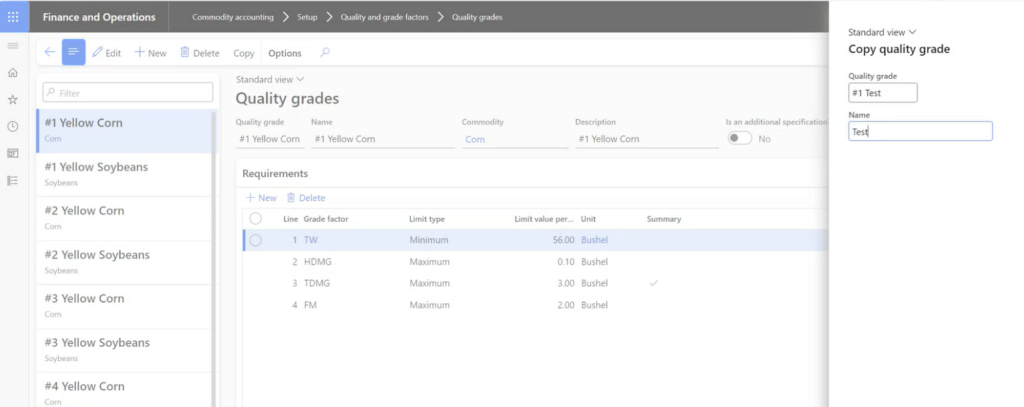Copy Quality Grades
Levridge 2024 Release 2.0 introduces the “Copy Quality Grades” feature. This update will streamline the process of managing commodity accounting quality grades, offering users a quicker and easier way to duplicate and modify quality grade settings.
What Are Quality Grades?
Quality grades in commodity accounting refer to specific standards or classifications assigned to commodities like corn, wheat, and other agricultural products. These grades determine the quality of the commodity and, subsequently, its pricing, handling, and trade. Since commodity markets are heavily reliant on these grades, having an efficient system for managing them is crucial for businesses in the industry.
The New Copy Quality Grades Feature
This feature allows users to duplicate an existing quality grade and modify it as needed. Here’s how it works:
1. Accessing the Feature: To start using this feature, users need to navigate to the commodity accounting module. Under the setup section, there is an area specifically for quality grades, which has existed since the inception of the product.

2. Using the Copy Button: The “Copy” button is at the top of the quality grades screen. Selecting an existing grade, such as “Number One Yellow Corn,” allows the user to duplicate it with just a click.

3. Renaming the Grade: After selecting the quality grade to copy, the system prompts the user to input a new name for the duplicate. For example, a user could create a “Number One Test” grade. Once renamed, the new quality grade appears in the list, ready to be further customized or used in accounting operations.

Benefits of the Copy Feature
– Efficiency: Users no longer have to manually create new quality grades from scratch. This feature cuts down on repetitive tasks, allowing for faster modifications to existing grades.
– Accuracy: By copying an existing quality grade, users can ensure consistency across similar grades, reducing the risk of input errors.
– Flexibility: The ability to quickly duplicate and rename grades provides businesses with greater flexibility to adapt their systems to changing market conditions or internal requirements.